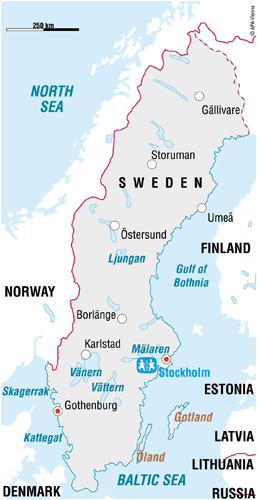
In the mid-1960s, the idea of SOS Children's Villages reached Sweden. On 2 July 1964, the Committee "Swedish Friends for SOS Children's Villages" (Kommittén för SOS-Barnbyarnas Vänner i Sverige) was formed in the capital city of Stockholm. Its aim was to support SOS Children's Villages all over the world, especially in developing countries. In 1972, the official Swedish promoting association, SOS-Barnbyar Sverige, was founded.
For just $36/month you can sponsor a child and help provide an orphaned or abandoned child with:
- A safe and nurturing home
- A loving SOS mother
- Quality education
- Healthcare
- Nutritious food
- Clothing and toys
- All the things necessary for a bright future
SOS Children's Villages in Sweden
SOS Children's Villages Sweden does not have family-based care in the country. The association, which is located in the capital of Stockholm, raises funds for the work of SOS Children's Villages in all parts of the world.
At the end of the 1970s, the Swedish SOS Children's Villages association was able for the first time to take over the responsibility for financing an entire SOS Children's Village, SOS Children's Village Pune in India. Since then it has funded many SOS Children's Village Programmes all over the world.

One of the highest levels of social spending in Europe
Sweden has one of the best living standards in the world. Although the spending on social welfare has been reduced in recent years, the county still has one of the highest levels of social spending in Europe. Sweden ranks among the most egalitarian societies in the world - it has one of the lowest levels of poverty and income is distributed more equally than elsewhere. Equality is enforced by legislation which is overseen by an Ombudsman.
People living in Sweden have access to a good health-care system. Swedes have one of the highest life expectancies in Europe - 79.1 years for men and 83.2 years for women - and the infant mortality rate is very low.
In 2008, around one per cent of the active population was employed in agriculture and 28 per cent in manufacturing. The main employer was the service industry, employing around 71 per cent. The unemployment rate was 6.4 per cent, but increased to 8.3 per cent in 2009.
Situation of the children in Sweden
There are just under two million children living in Sweden. The rights of children are well-protected - through laws, through various organisations and through an Ombudsman.
Swedish children have to attend school for nine years, but around 90 per cent choose to continue their education for a further three years. About a third go on to acquire tertiary education. The principle of egalitarianism is also applied to education - there is universal access to schooling, children over the age of one are guaranteed a place in a kindergarten and all children get a free school lunch.
Around three quarters of children live with both their birth parents and a further quarter live with one step-parent.
